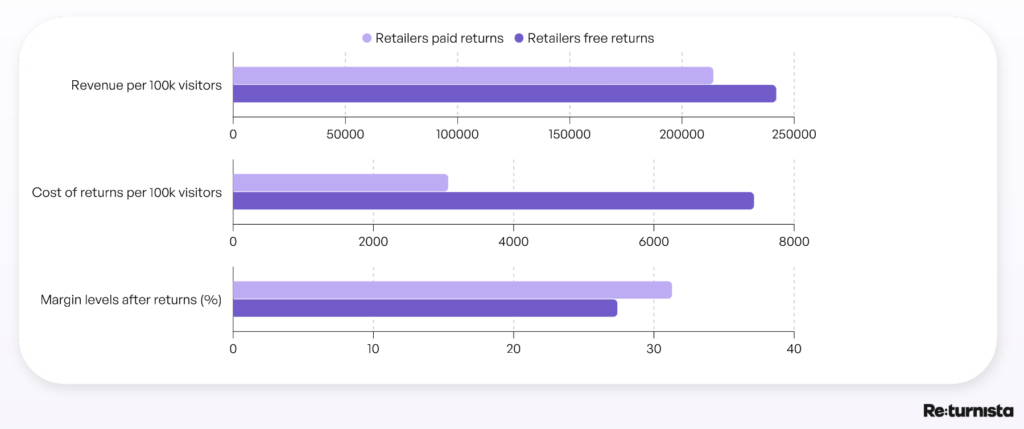The e-commerce market has boomed in recent years. But, with the growth in sales, the number of returns has also increased significantly. Whereas online stores used to entice consumers with free returns, it is major brands such as H&M and Zara recently started charging fees.
By doing so, they want to reduce the cost of those increasing returns. Many online stores want to follow suit but are afraid of the consequences. Is that justified? Returnista dived into the data, and they showed surprising results.
Returnista offers a return management platform that transforms the returns process from a cost item to a revenue generator. More than 1,000 customers automate and optimize the returns process with Returnista. With real-time visibility into return data, convenient exchange service, and access to all transportation services, companies retain 40% of their revenue.
The increase in the number of returns
E-commerce is expected to continue to grow strongly. Several articles show that the market will grow to 1,200 billion Euro by 2025. With this growth, e-commerce experts expect the number of returns to increase from 1.5 billion in 2021 to 2.5 billion in 2025.
Increasing returns need not be a commercial headache as long as sales increase faster. But that’s precisely where the problem lies. Indeed, as many as 91% of retailers report that return rates (number of returns: number of orders) are rising faster than sales growth.
Major brands start charging fees
With return rates rising faster than sales growth, major brands H&M, Zara, and Boohoo have announced they are moving away from free returns. Consumers will bear the cost of returns.
Many online stores are now asking whether they will follow suit. Returnista has looked at 300,000 orders and has come up with an opinion.
Free returns vs. charging fees
Data shows that the return rate of paid returns is 24% lower than free returns. Looking at the total value of those returns, it saves a merchant 41% of the cost.

This result is not very surprising. But what does stand out is that online stores that charge fees show better numbers financially when you compare the lower conversion (due to paid returns) with the coverage of the costs.
Olivier Muller, CEO at Returnista, explains, “What we see is that online stores see the number of sales only slightly decrease the moment they charge. But when you set that against the costs you save by passing on returns to the consumer, you keep more at the bottom of the line.” When asked if he would advise all online stores to switch to paid returns, his answer is, “Of course, it’s up to the online stores themselves to decide that. But based on the figures, you don’t have to stick to free returns.”
Source: Returnista
